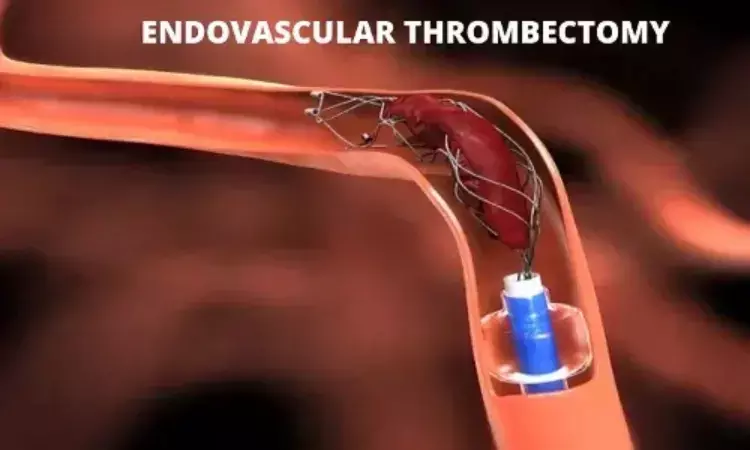- Home
- Medical news & Guidelines
- Anesthesiology
- Cardiology and CTVS
- Critical Care
- Dentistry
- Dermatology
- Diabetes and Endocrinology
- ENT
- Gastroenterology
- Medicine
- Nephrology
- Neurology
- Obstretics-Gynaecology
- Oncology
- Ophthalmology
- Orthopaedics
- Pediatrics-Neonatology
- Psychiatry
- Pulmonology
- Radiology
- Surgery
- Urology
- Laboratory Medicine
- Diet
- Nursing
- Paramedical
- Physiotherapy
- Health news
- Fact Check
- Bone Health Fact Check
- Brain Health Fact Check
- Cancer Related Fact Check
- Child Care Fact Check
- Dental and oral health fact check
- Diabetes and metabolic health fact check
- Diet and Nutrition Fact Check
- Eye and ENT Care Fact Check
- Fitness fact check
- Gut health fact check
- Heart health fact check
- Kidney health fact check
- Medical education fact check
- Men's health fact check
- Respiratory fact check
- Skin and hair care fact check
- Vaccine and Immunization fact check
- Women's health fact check
- AYUSH
- State News
- Andaman and Nicobar Islands
- Andhra Pradesh
- Arunachal Pradesh
- Assam
- Bihar
- Chandigarh
- Chattisgarh
- Dadra and Nagar Haveli
- Daman and Diu
- Delhi
- Goa
- Gujarat
- Haryana
- Himachal Pradesh
- Jammu & Kashmir
- Jharkhand
- Karnataka
- Kerala
- Ladakh
- Lakshadweep
- Madhya Pradesh
- Maharashtra
- Manipur
- Meghalaya
- Mizoram
- Nagaland
- Odisha
- Puducherry
- Punjab
- Rajasthan
- Sikkim
- Tamil Nadu
- Telangana
- Tripura
- Uttar Pradesh
- Uttrakhand
- West Bengal
- Medical Education
- Industry
TESLA Trial: No Significant Benefit for Thrombectomy in Stroke Patients with Large Infarcts on Noncontrast CT

USA: The TESLA Randomized Clinical Trial has provided crucial insights into a significant exploration of thrombectomy for patients experiencing strokes with large infarcts.
The findings from the trial, published in JAMA, showed that in patients with a large infarct visible on noncontrast computed tomography (CT) within 24 hours, thrombectomy did not improve functional outcomes. However, the credible interval surrounding the effect estimate encompasses the possibility of no significant effect and a clinically meaningful benefit.
Recent thrombectomy trials involving large infarcts have utilized a variety of imaging modalities and time frames for patient selection. Noncontrast computed tomography (CT) remains the most prevalent imaging method for strokes. However, it is still unclear whether thrombectomy is effective for patients with large infarcts detected solely by noncontrast CT within 24 hours of stroke onset. To fill this knowledge gap, Osama O. Zaidat, Neuroscience Institute, Toledo, OH, and colleagues aimed to assess the effect of thrombectomy in patients with a large infarct on a noncontrast CT scan within 24 hours of onset.
For this purpose, an open-label, blinded-end point, bayesian-adaptive randomized trial was conducted at 47 academic and community-based stroke thrombectomy centers across the US. The trial enrolled 300 patients presenting within 24 hours with anterior circulation, large-vessel occlusion, and large infarcts visible on noncontrast CT scans, with Alberta Stroke Program Early CT Scores ranging from 2 to 5. These participants were randomized to receive either thrombectomy or usual care.
Patients assigned to the intervention group (n = 152) underwent endovascular treatment utilizing standard thrombectomy devices along with usual medical care, while control patients (n = 148) received only usual medical care. The primary efficacy endpoint focused on improvement in 90-day functional outcomes, measured by mean utility-weighted modified Rankin Scale (UW-mRS) scores, which range from 0 (indicating death or severe disability) to 10 (indicating no symptoms), with a minimum clinically important difference of 0.3.
A Bayesian model was employed to determine the posterior probability of the intervention's superiority over usual care, establishing statistical significance at a one-sided posterior probability of 0.975 or higher. Additionally, the primary adverse event endpoint was assessed through 90-day mortality rates, while secondary adverse event endpoints included symptomatic and radiographic intracranial hemorrhage.
The following were the key findings:
- The trial enrolled 300 patients (152 intervention, 148 control; 46% females; median age, 67 years) without early stopping or enrichment; 297 patients completed the 90-day follow-up.
- The mean 90-day UW-mRS score was 2.93 for the intervention group vs 2.27 for the control group, with an adjusted difference of 0.63.
- The 90-day mortality was similar between groups: 35.3% for the intervention group versus 33.3% for the control group.
- 4.0% of patients in the intervention group and 1.3% in the control group experienced 24-hour symptomatic intracranial hemorrhage.
- 9.5% in the intervention group versus 2.7% in the control group experienced parenchymal hematoma type 1 hemorrhage; 9.5% in the intervention group versus 3.4% in the control group experienced parenchymal hematoma type 2 hemorrhages; and 16.2% in the intervention group versus 6.2% in the control group experienced subarachnoid hemorrhages.
The findings revealed that thrombectomy failed to significantly improve functional outcomes at 90 days among patients with large infarcts detected by noncontrast CT and presenting within 24 hours.
"However, the width of the credible interval surrounding the effect estimate suggests that both the possibility of no significant effect and a clinically relevant benefit are feasible. This indicates that further research is needed to explore the potential role of thrombectomy using this imaging approach and time frame," the researchers concluded.
Reference:
The Writing Committee for the TESLA Investigators, TESLA Investigators. Thrombectomy for Stroke With Large Infarct on Noncontrast CT: The TESLA Randomized Clinical Trial. JAMA. Published online September 23, 2024. doi:10.1001/jama.2024.13933
Dr Kamal Kant Kohli-MBBS, DTCD- a chest specialist with more than 30 years of practice and a flair for writing clinical articles, Dr Kamal Kant Kohli joined Medical Dialogues as a Chief Editor of Medical News. Besides writing articles, as an editor, he proofreads and verifies all the medical content published on Medical Dialogues including those coming from journals, studies,medical conferences,guidelines etc. Email: drkohli@medicaldialogues.in. Contact no. 011-43720751


